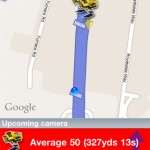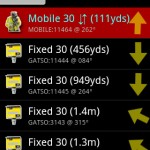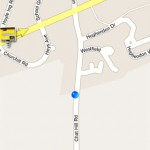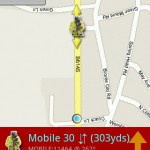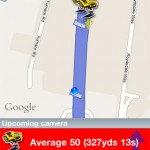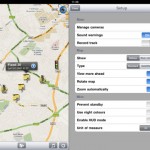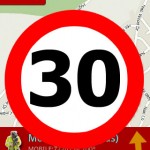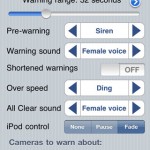Before listing a lot of questions and answers it is good to know how Speed Camera Warning systems work, and how you can sometimes get “False Alerts” or sometimes no alerts when driving on the roads.
GPS Speed Camera warning systems will never be perfect. There are a number of problems that could be overcome, but as with everything in life it is a balance between cost and functionality. The perfect Speed Camera Alerting system would be prohibitively expensive, so we must accept some limitations which will either give us false warnings or late warnings.
Please remember that the Speed Camera warning system is exactly that: a warning system. It is not designed to help you break the law or drive dangerously or in an inconsiderate manner. If, as the authorities claim, the Speed Cameras are placed at accident black spots then this helps you become more aware of unfamiliar road incident areas.
Maintaining the database
The Speed Camera database is continually changing as new cameras are found and existing ones change either location, speed or direction of operation. We have thousands of camera spotters telling us where these changes are happening. We then have teams of verifiers who check the reports for accuracy and try to add additional information to each location. Finally the whole process is tied together by admin staff who make the final adjustments in the database. We believe that this moderated community collection is the ultimate method to keep the database up to date.
How Speed Camera Alert Systems work
The database pinpoints speed cameras. You can regard these as being dots on a blank piece of paper. These dots do not move, but will have some information associated with them. This will typically be camera type, speed, and direction. Using this information we can now interpolate the effective area that the camera will cover. Your car obviously moves, and keeping the analogy it is like moving a pointer over the paper. This also has information associated with it: speed of travel and direction being the most important. With this information combined with the camera information we can tell when a camera is coming into range.
Now obviously you can move the pointer in any direction, but in real life you are constrained by the road network. This is where the issues arise!! If you are traveling in a straight line and the speed camera is directly in front of you, you will be able to set a precise distance to be warned at, but what happens if the camera is just round a bend? Well this is where a cone of awareness is used. This cone allows the Speed Camera warning system to evaluate which cameras are in range within the area of the cone and this is where the “False Warnings” arise. Depending on the configuration used this cone can spread 180 degrees for 1km. This may not be a problem on a country road, but may issue lots of alerts in a city with lots of cameras. For example if you are traveling on a major road and there is a road running parallel at a lower speed then you will be warned if there is a camera on the slower road. There are a number of possible scenarios where you will be issued “False Warnings” some of these are outlined below.
False Alerts
In all cases we consider the issuing of False Alerts preferable to the possibility of not alerting for a genuine camera location.
Case 1: Parallel Road.
This is often the cause of many false alerts. A road that runs parallel to the one you are traveling on has a speed camera in the direction you are driving. You will never see this camera, but it will still trigger an alert.
Case 2: Wrong direction.
If a camera is in the database but we have not entered a direction for it then if you approach it from the other direction an alert will be issued. This will also be the case if the camera is reversible i.e. can be turned round to face the other direction.
Case 3: Mobile Camera not there.
The database records known Mobile Camera sites, but due to the nature of these it is far more likely that no camera will be there when you pass. As Mobile Speed Cameras are the most “dangerous” we also record unverified or possible locations in the database. Mobile sites do change over time and we purge any mobile that has not been reported as seen after a period of time.
Case 4: Camera on a cross road.
If you are approaching a junction and the camera is on the cross street then if the angles are correct the camera can fall within the detection cone and will trigger an alert.
Random Alerts
There are sometimes when an alert will be issued a number of times.
Case 1: The long and winding road…
Occasionally the road will twist and turn. This can result in warnings being given a number of times for the same camera. This is because it will keep on coming into and out of range and direction.
Case 2: Camera goes out of range.
Sometimes when you are driving on a road you come in the detection range of a camera on another road, but the road you are on then turns away from that camera. You will get the warning but then the warning will be cancelled. This can also occur if your speed is constantly changing. This means the time before you reach the camera keeps going in and out of the warning criteria.
No Alerts
There are a few scenarios where alerts will not be issued or will be issued late.
Case 1: Camera after sharp bend
Another possibility is the late warning for a camera. this can occur when you are traveling along a road with a sharp bend. As you approach the bend the camera is within the cone’s area, but the camera is not facing the correct direction. When you go round the bend the camera suddenly comes into range in the correct direction.
Case 2: Average Speed cameras.
Average speed (or SPECs) are becoming more prevalent in some countries now. There is a lot of confusion and misunderstanding of how these work. The system uses pairs of cameras separated by 500 or more meters. When you pass the first camera your car is recorded along with the time you passed. When you pass the next set of cameras the time is taken again, then the system works out how long it took you to complete that stretch of road and knowing the distance between cameras it can work out your average speed. Most Speed Camera Alert systems will inform you of the actual cameras, but not the fact that you are in an average speed area. The PocketGPSWorld.com CamerAlert app does record these cameras correctly and will keep a record of the average speed you travel in each section of the Average Speed Camera coverage.
Summary
If you understand the reasons why you occasionally get ‘false’ or ‘random’ alerts then you will appreciate the security that the warning system will give you on your journey. This behaviour will increase when driving in cities with a higher proportion of cameras. I tend to use the false alerts to remind me to check my speed along with the road conditions.


